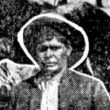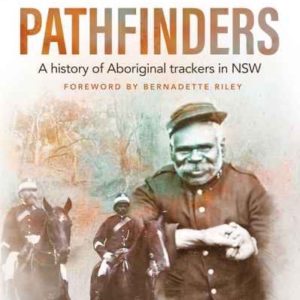Loading map...

Harry Doolan, a Gamilaraay man, was born at Pilliga in 1855 to Bob Doolan and Tincan [ref]DC of Harry Doolan 1917/012607.[/ref]. He began tracking at Wee Waa in April 1891 where he remained for the next two years. His next tracking assignment was at Baradine for the first three months of 1898. He was also the tracker at Cumnock in 1902 where he was regarded as an expert practictioner [ref]Molong Express and Western District Advertiser 7 June 1902: 6.[/ref]. Doolan’s last job was at Glencoe (aka Porters Retreat) where he worked from December 1903 to January 1904 [ref]Police Salary Registers: 1891-1893 SR 11/16336 Reel 1971; 1898 SR 3/2992 Reel 1973; 1903-1904 SR 11/16337 Reel 1971.[/ref]. At other times, he supported himself by labouring. Doolan died at Pilliga Aboriginal Station in August 1917. He had seven children with Mary Anne Green of Wee Waa and numerous descendants live in the district today.

 This website explores the history of Aboriginal trackers in NSW from 1862 when the current NSW Police Force was established through to 1973 when the last tracker, Norman Walford, retired. You can read about the lives of individual trackers and some of the incredible tracking feats they...
This website explores the history of Aboriginal trackers in NSW from 1862 when the current NSW Police Force was established through to 1973 when the last tracker, Norman Walford, retired. You can read about the lives of individual trackers and some of the incredible tracking feats they...

There were over 200 NSW police stations that employed Aboriginal trackers between 1862 and 1973. Many were concentrated in the central-west and north-west of the state, the agricultural and pastoral heartland of NSW. This is because one of the main jobs of trackers was to pursue sheep, cattle and horse thieves. Trackers sometimes lived in small huts out the back...
Learn More ►
Pathfinders book Pathfinders, A history of Aboriginal trackers in NSW, written by Dr Michael Bennett and published by NewSouth, is now available from all good bookstores. Click on the link below to order your copy. https://www.abbeys.com.au/book/pathfinders-a-history-of-aboriginal-trackers-in-nsw.do Early History Since the beginning of the colony, government agencies, explorers, surveyors and members of the general public called upon the tracking...
Learn More ►